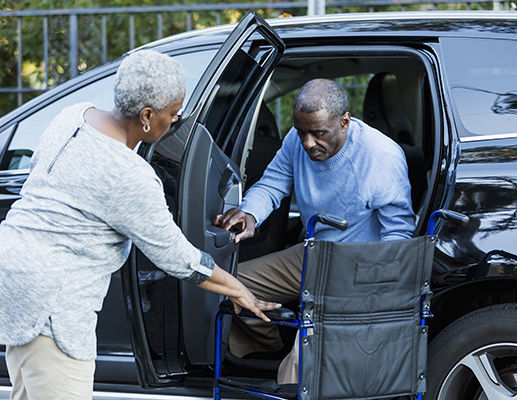As the reality of our global state of affairs during the COVID-19 pandemic continues to simultaneously settle in and disrupt the lives of so many, the chasms that define our society are becoming clearer for some people. For others, the injustices that are being revealed are not new, and in fact, they represent an everyday reality. When we think about what it means to social distance, keeping six feet apart from individuals not in your household is difficult, if not impossible, to adhere to if you’re a merchant at a market in Harare or a black older adult working an essential job in Detroit. Right here in New York, when a high school friend returns home after working a shift as a social worker in the Bronx, she either boards a bus with barely any standing room or must wait hours for another bus that is safe to ride.
America’s systemic failings have become more evident as the novel coronavirus continues to impact communities across the country. The virus’s disproportionate burden on communities of color, in particular, has made headlines as data continue to highlight the existing health disparities that leave many at terrible risk from a pandemic that knows no borders. In Louisiana, the black population represents approximately 33% of the state and yet, black people make up 60% of coronavirus deaths. In New York City, Hispanic individuals compose the highest number of deaths among all racial/ethnic groups. The impact of COVID-19 is made even more profound on older adults of color and we must use these challenging times to remind the world why it is imperative to proactively improve health systems.
Nursing homes and long-term care facilities are undoubtedly being heavily impacted by the rapid spread of COVID-19. In New York State, nursing homes with higher amounts of patient deaths do not necessarily have low quality ratings or low staffing levels - they have higher amounts of patients of color. Attention has also been missing on the impact of COVID-19 on older adults whose primary caregivers are family members in multi-generational homes. These living arrangements are more common among America’s Asian, Hispanic, and Black populations at 29%, 27%, and 26% of households, respectively, compared to only 16% of white households. How realistic is advice to minimize multi-generational living for a family with only one shared apartment in New York City? What happens when at least one family member is a nurse making daily contact with probable COVID-19 cases? At least 75% of our essential workforce in NYC are people of color which makes social distancing close to impossible in many communities. Beyond home structures, what considerations have been given to older adults living in food deserts in low-income communities – a longstanding issue that has only been exacerbated by the pandemic?
These issues have been around long before COVID-19 and addressing disparities in health outcomes for older adults of color, particularly low-income adults is a cornerstone of the work that we are continuing to do at The John A. Hartford Foundation. Through our advancement of Age-Friendly Health Systems and Age-Friendly Public Health Systems, we are working to meet the needs of older adults and in particular, to reach low-income communities and communities of color, such as those served by community health centers. Through another Foundation initiative, the Diverse Elders Coalition has conducted groundbreaking research on the needs of family caregivers in diverse populations. The initiative has now incorporated those findings into a training curriculum for health care and social service organizations to better meet the needs of diverse caregivers. Our work and the work of our grantees is supporting the health and well-being of vulnerable communities so that when emergencies like the current pandemic arise, communities are better prepared.
Disasters such as Hurricane Katrina and COVID-19 often grab the nation’s attention due to how deeply they impact communities of color. The shock often morphs into disinterest as news cycles quickly move on to the next story. We can’t let that happen. As we continue to navigate this pandemic, we must learn from the past and what is currently enfolding today to ensure that age-friendly movements address structural racism and center on immigrants and communities of color at the core. Age-friendly movements must be inclusive of the needs of older adults struggling with worsened social isolation and older adults who do not have the privilege to keep themselves safe from exposure. On a systemic level, we must continue the needed work to make accessing health services a more equitable experience for Black and Hispanic/Latinx communities through addressing the implicit biases that exist when seeking care and testing services. Fighting COVID-19 will take a collective effort and it gives us the opportunity to rethink what we traditionally accept about health care in America when it comes to the injustices and inequities that are a reality for too many of us.
Sincerely,
Maryama Diaw, BA
Intern, The John A. Hartford Foundation
Marcus Escobedo, MPA
Vice President, Communications and Senior Program Officer, The John A. Hartford Foundation

